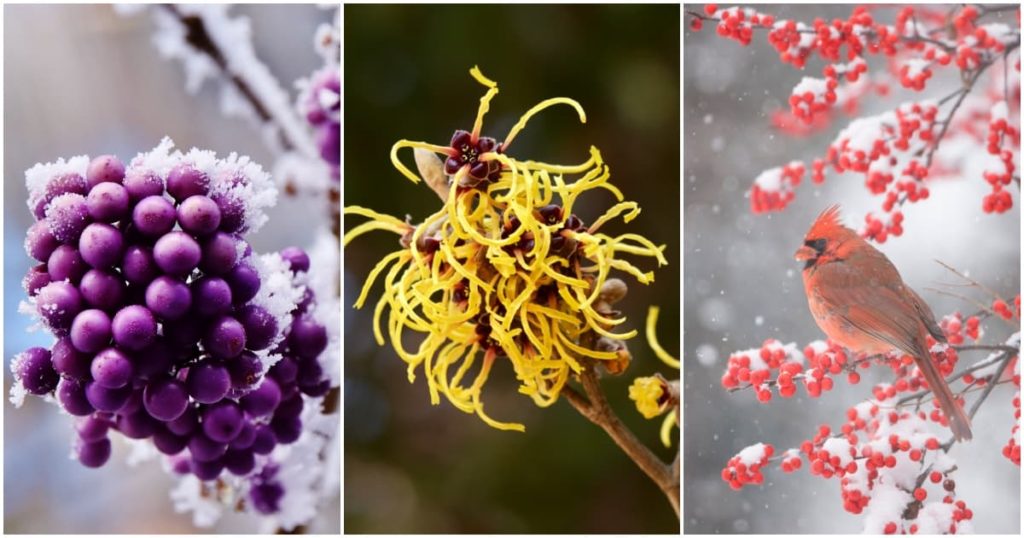
Who thinks of garden plants for the frozen months of winter?
Just imagine creating gorgeous growing forms for future drapes of pristine glowing white snow.
Here we’ll share more than just one way to make a beautiful blooming backyard the most precious place to spend a wonderful winter’s day.
For some, winter is a special time of rest and reflection. While others may listen to the migratory pull and head to warmer climates to avoid winter’s frosty grasp.
Many of us may complain, but really, we love the sparkle on snow, and the chill that is bolstered by low sunshine seeming to illuminate intricate, crystalized frost structures from within.
Glorious Forms Draped in Snow
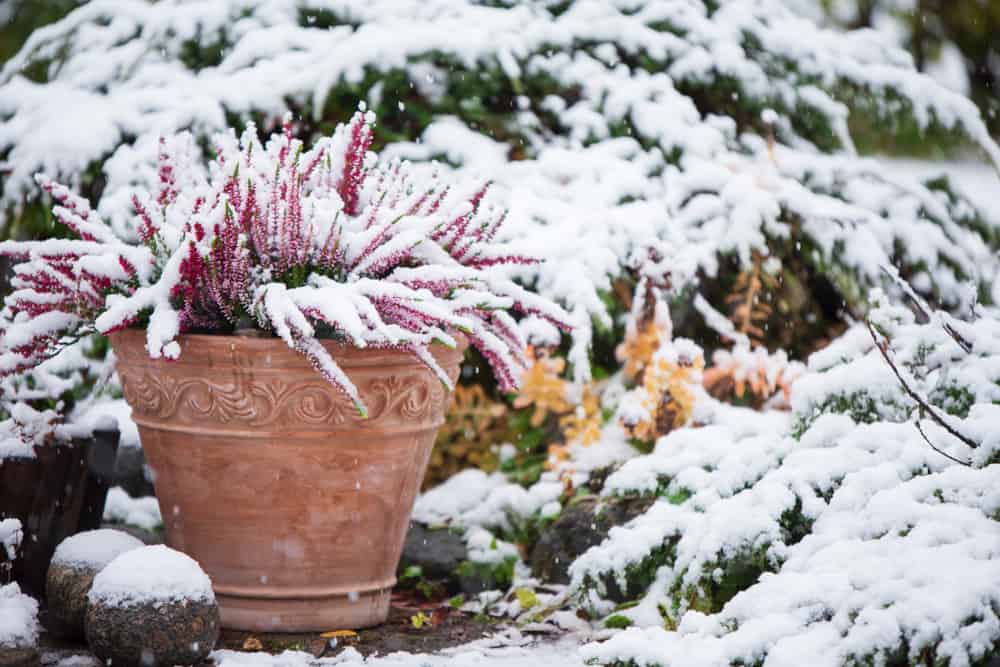
Silence. The serene muffled quiet that arrives with an insulating layer of powdered ice flakes. Plants which maintain their structure throughout the harsher seasons make enchanting bearers of glowing snow.
The graceful arching sword-like leaves of sturdy ornamental grasses covered in snow may brighten an otherwise dull winter’s day. Or the stoic upright conical shapes of the hardiest evergreens famously sooth the soul with snow-bearing branches.
Light Up the Long Dark Nights of Winter
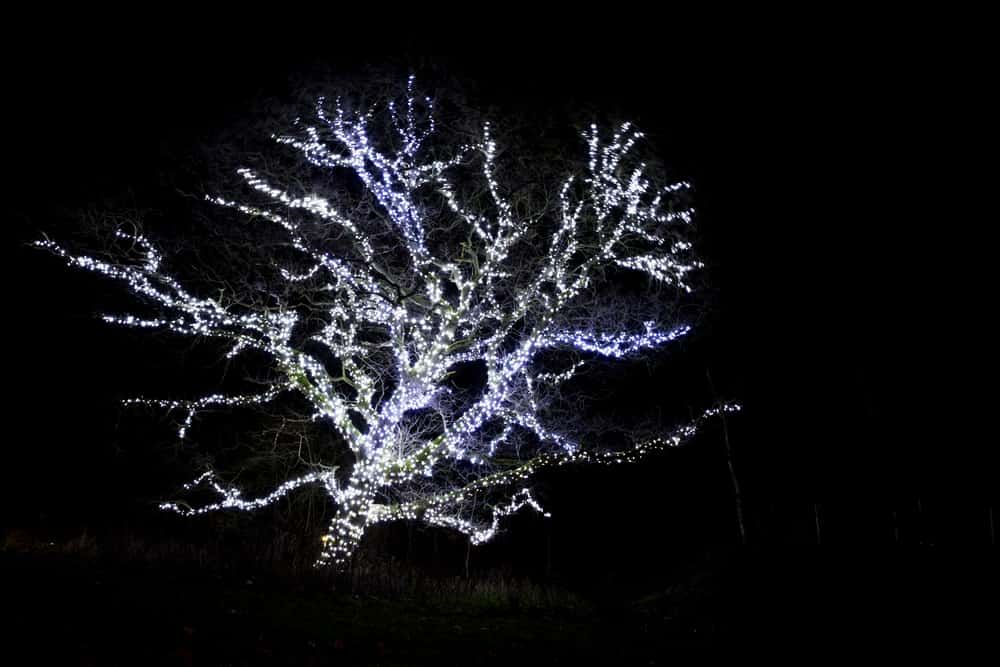
More than just bearers of snowflakes, many plants, shrubs, and trees welcome us to light up the long dark nights of winter.
Creating winter light scapes by hanging lights on sturdy, well-branched trees and shrubs is a sure-fire way to help celebrate a cozy winter evening. At the same time, lighting pathways or hedge borders not only increases safety on slippery icy evening walks, but it also invites a wintry whimsy to the activity.
Using spotlights or floodlamps, energy efficient ones of course, to bring attention and focus to deserving specimen plants, extends the value of these eye-catching living art pieces.
Unique Shapes, Bright Colors
Herbaceous perennials that hold up interesting seed heads long after the last leaves have dropped create lovely points of curiosity in the winter garden.
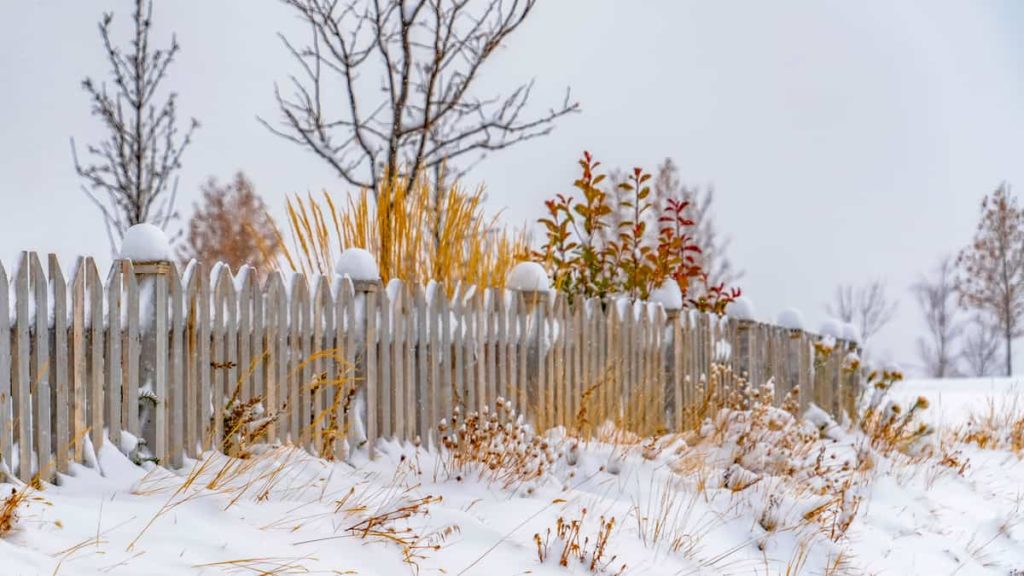
Colorful bark on shrubs and trees offers welcome contrast to the monochrome landscape. Similarly, barks with unique markings, horizontal or vertical striations, or striking smoothness stand out amongst the blankets of flowing white carpet.
Berries, Fruit, Seeds, and Nuts
Extra entertainment during the cold long winter months is never unwelcome! Branches full of colorful berries or draping fruits provide visual interest, certainly. But they may also provide food for other birds and animals who also prefer to tough out the cold weather.
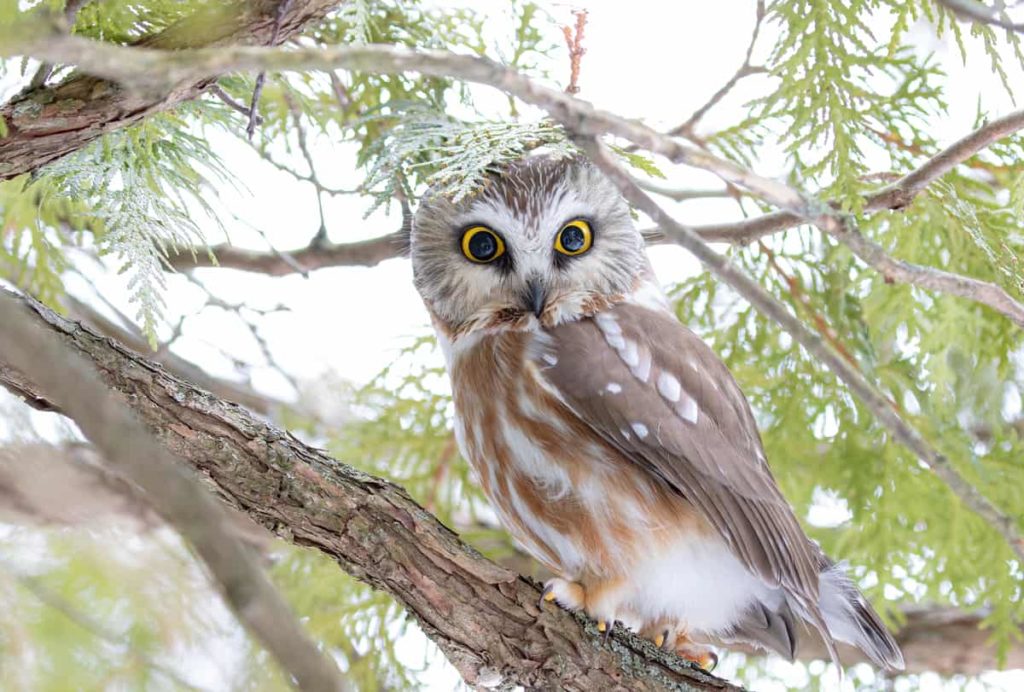
Providing food sources with pretty berries, fruit, seeds, and nuts for welcome wild visitors not only creates winter interest but creates a chance for some natural entertainment too.
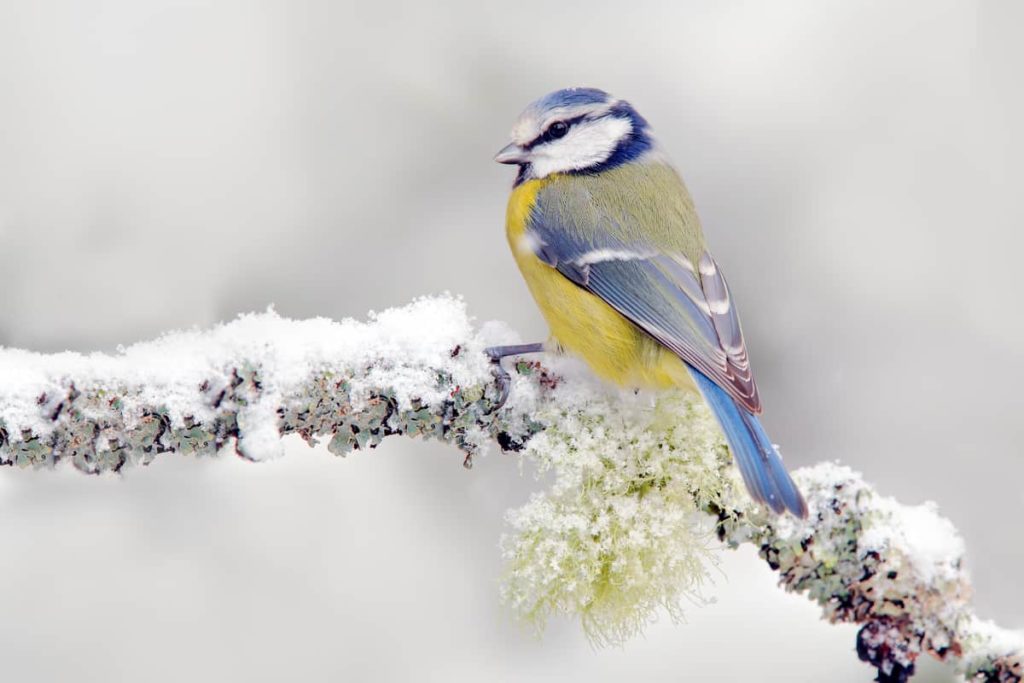
The Ease of Evergreens
Many evergreen trees and shrubs take winter in stride. The strong conical shapes of upright spruce, fir, and pine hold the snow in attractive ways. The graceful branches of false cypress and cedar are equally breathtaking when coated in glacial frosting.
Evergreen shrubs such as juniper and arborvitae are essentially made to handle winter’s freezing and fluctuating temperatures. Many are available in interesting colors such as blue star juniper and golden globe arborvitae, each creating drama in the winter landscape.
Exceptionally, pruned, and shaped boxwood and yew can take on stunning effects with drifts of frost to accentuate their formal structures.
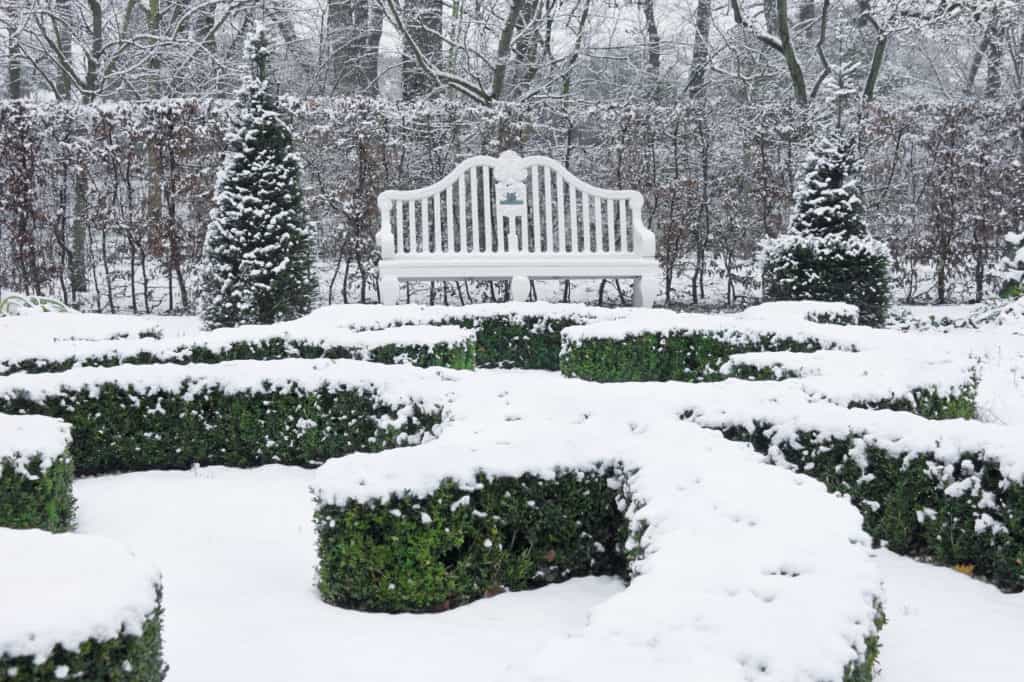
While in some northern areas certain broadleaf evergreens may lose their leaves in winter, many plants such as rhododendron, azalea, magnolia, and holly keep their leaves throughout the season to gorgeous effect.
Some quick tips to keep evergreens looking their best throughout the winter are:
- Water evergreen trees and shrubs deeply in the fall.
- Mulch around the base of evergreen trees and shrubs to protect from water loss and fluctuating temperatures.
- Protect less cold hardy varieties by planting them away from harsh winter winds and extreme full sun.
Spotlight Stealing Winter Bloomers
Fresh blossoms in the middle of winter? Yes! A few interesting trees and shrubs bloom in winter, late winter, or incredibly early in spring. These special plants may take the chill off any frosty winter day or night!
16 Best Trees and Shrubs For Winter Interest
1. Wintersweet (Chimonanthus praecox)
This winter-blooming shrub grows 10 to 15 feet tall in zones 7 to 9. With a little shelter form cold weather, plant in full sun. A great choice for hedges.
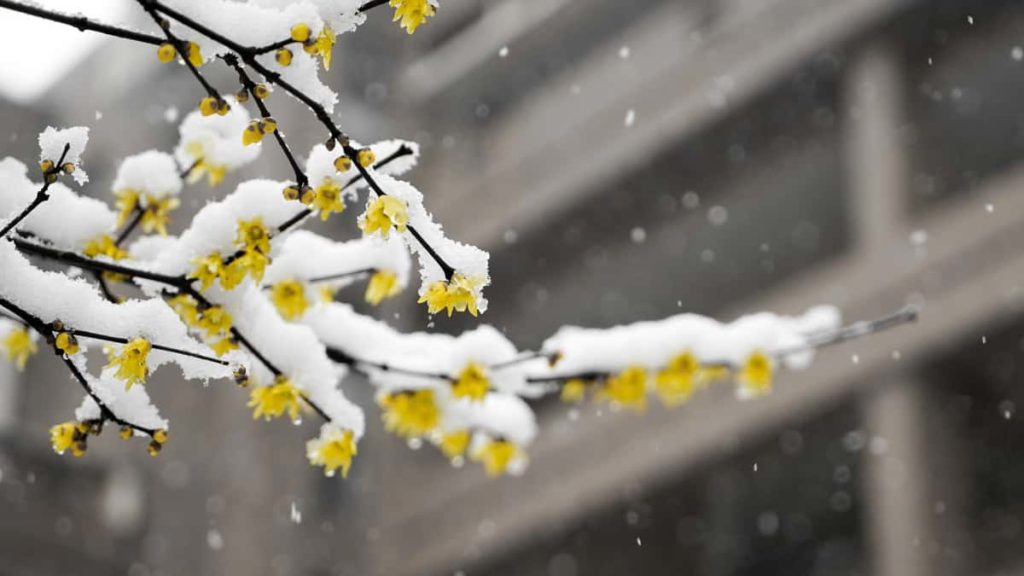
Incredibly fragrant, wintersweet’s unusual pendulous blossoms arrive December to March. They are star-shaped with yellow petals and purple centers. Wintersweet makes a beautiful fresh cut flower for lovely-scented winter arrangements.
2. Highbush Cranberry (Viburnum trilobum)
This 15-foot North American native is hardy in zone 2 to 7. The tart bright red berries provide sustenance for many winter bird species. Remaining berries support travel-weary, early arriving migratory birds.
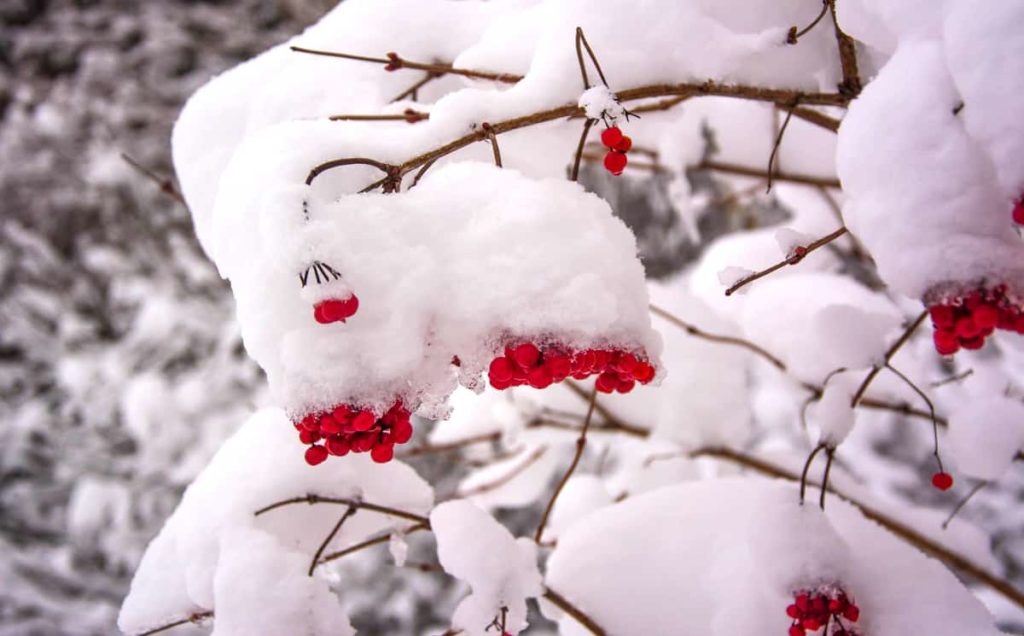
A true four-season shrub, young branches are copper colored while mature branches hold large clusters of bright red berries in winter. By June, the shrub is crowned with delicate lacy white flower clustered. The large bright green, maple-like palmate leaves turn a gorgeous crimson in late summer which persist on the plant late into autumn.
3. Red Osier Dogwood (Cornus Sericea)
The quintessential shrub for winter interest, Red Osier Dogwood grows 4 to 20 feet tall and thrives in zones 2 to 7. Another North American native, many cultivars have been developed to enhance the vibrant flame-colored branches.
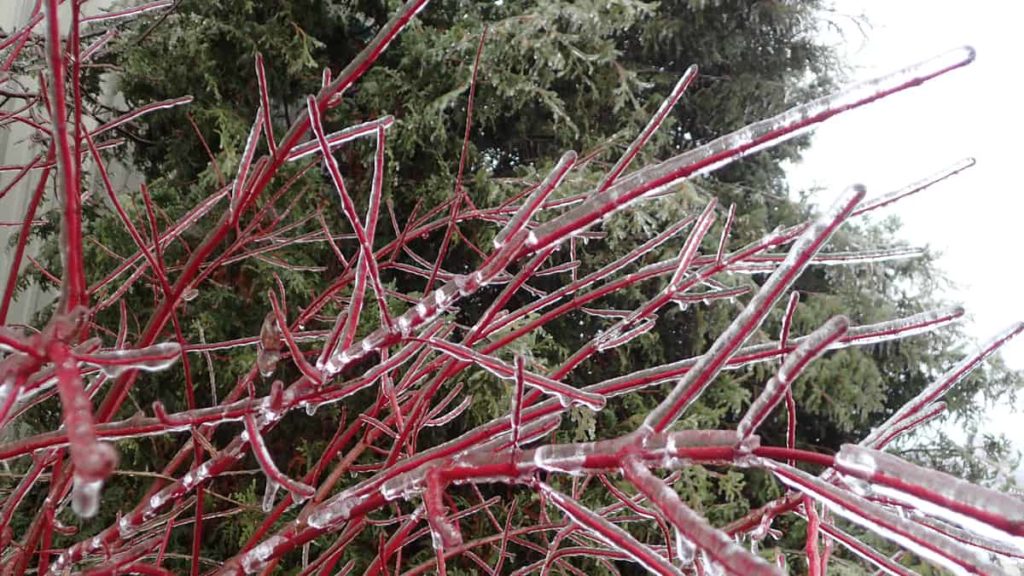
These look stunning against snow as well as with under plantings of ornamental grasses or in front of the stoic white bark of paper birch trees.
A wonderful background shrub which keeps a nice rounded open-branched form, the waxy oblong leaves have pointed tips. They are bright green turning to red in the fall. Spring brings off-white blossoms in flat umbels which turn into clusters of white berries through the summer months.
4. Harry Lauder’s Walking Stick (Corylus avellana ‘Contorta’)
The upright corkscrew branches of this deciduous shrub reach heights of 8 to 10 feet tall. In zones 4 to 8, Harry Lauder’s Walking Stick is a conversation piece in the landscape.
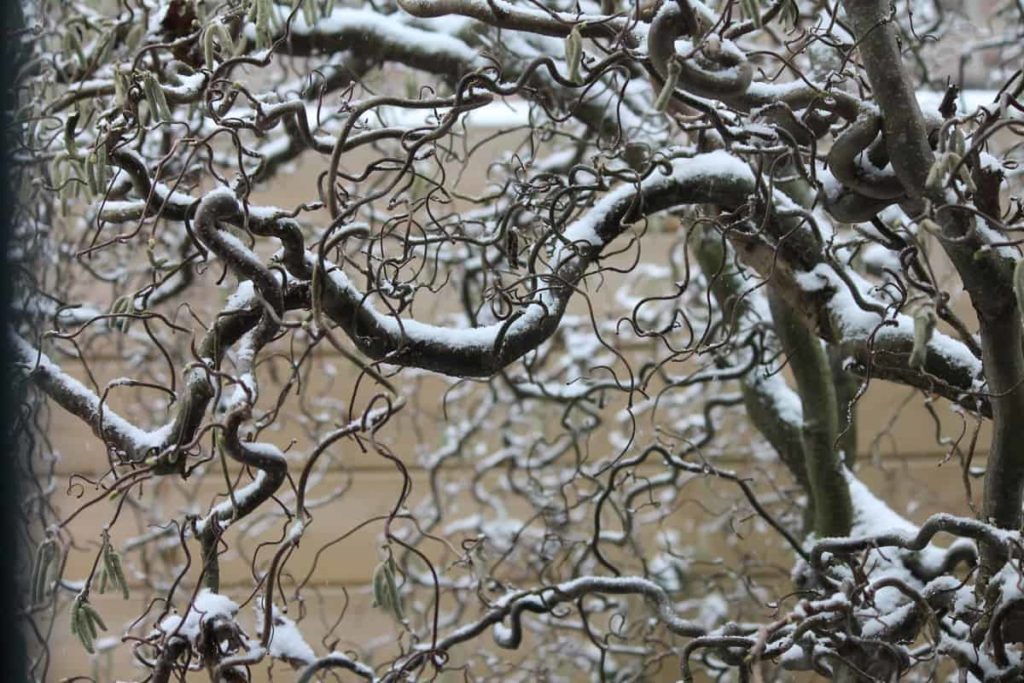
An excellent specimen for back lighting or lighting in such a way to cast intricate shadows of the contorted branches. A member of the hazelnuts, Harry Lauder’s Walking Stick doesn’t produce many nuts, but makes up for this with its interesting spiral branches.
In late winter, the twisted branches develop pendulous showy catkins to increase the wonderment of this exciting specimen shrub.
5. Winterberry (Ilex verticillata)
Winterberry grows 3 to 15 feet tall in zones 3 to 9, and like many of us, needs a friend to last out the long winter months. That is to say, only the female plants produce the stunning fruit display, so plant a male cultivar in the area for pollination.
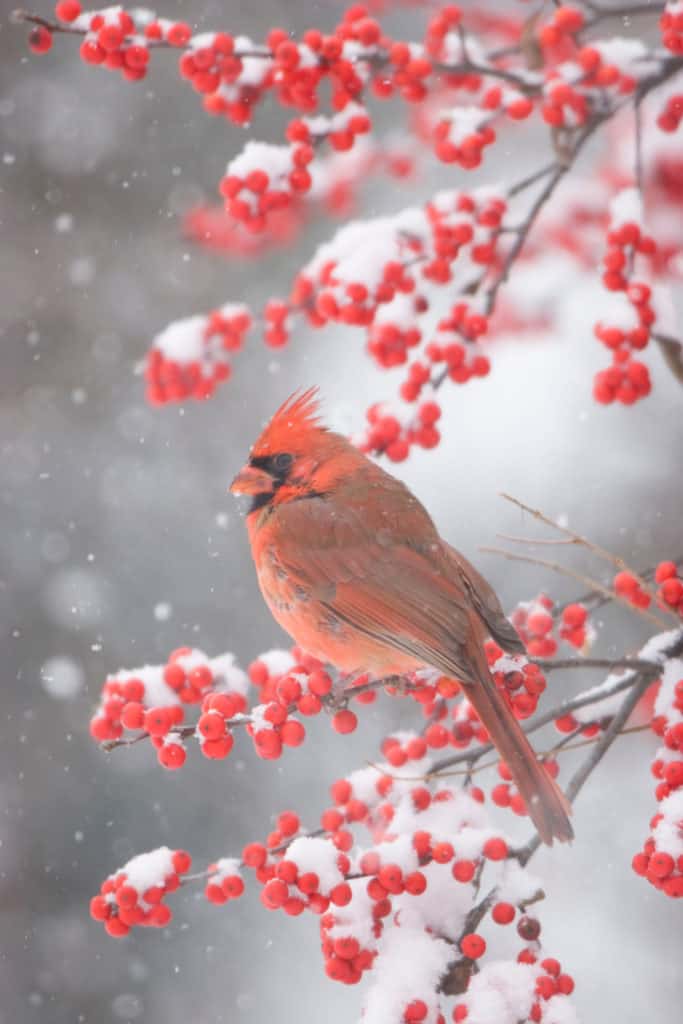
Hollies are an extremely useful broadleaf evergreen in the winter landscape. This holly, uniquely, is deciduous, losing its leaves to make way for its explosive berry display which shine in the winter sun while attracting many birds to the feast.
6. Firethorn (Pyracantha coccinea)
This semi-evergreen or evergreen grows up to 20 feet tall and 6 to 15 feet wide in hardiness zones 5 to 9. Its best attribute, the golden, orange, or red berries persist through the winter months.
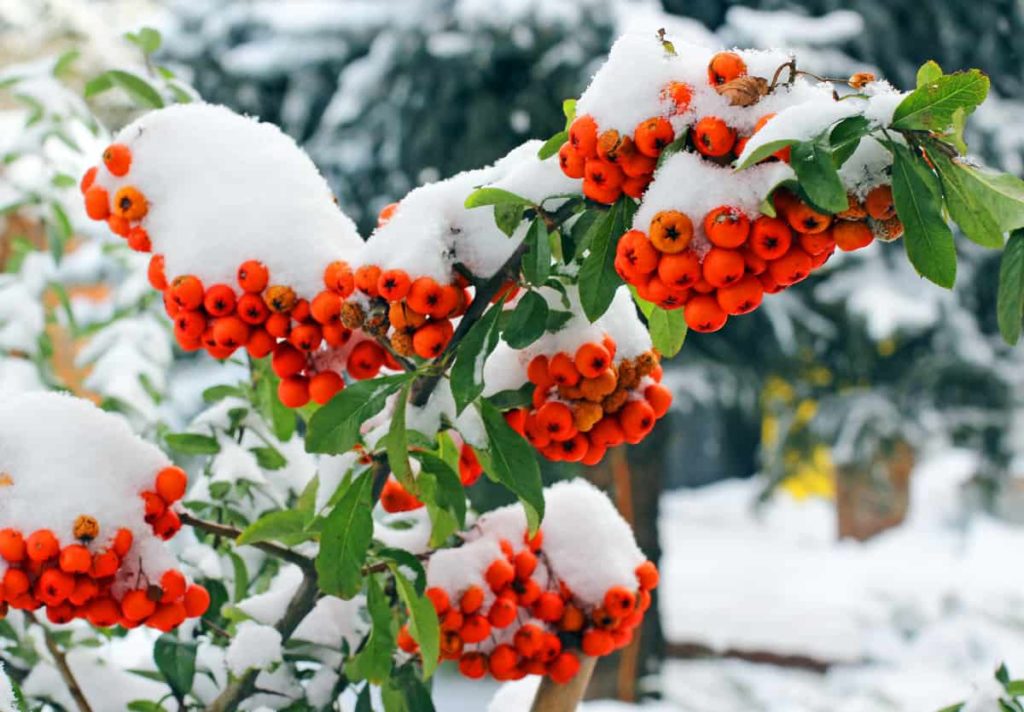
A low-maintenance shrub, firethorn is versatile. It makes a great hedge or accent plant. Interestingly, this shrub can also be espaliered on a trellis or against a wall, creating yet another interesting lighting opportunity.
7. Beautyberry (Callicarpa americana)
A favorite of birds and butterflies, Beautyberry grows 3 to 6 feet tall and wide. A North American native hardy in zones 6 to 10, Beautyberry is excellent for land reclamation as well as the home landscape.
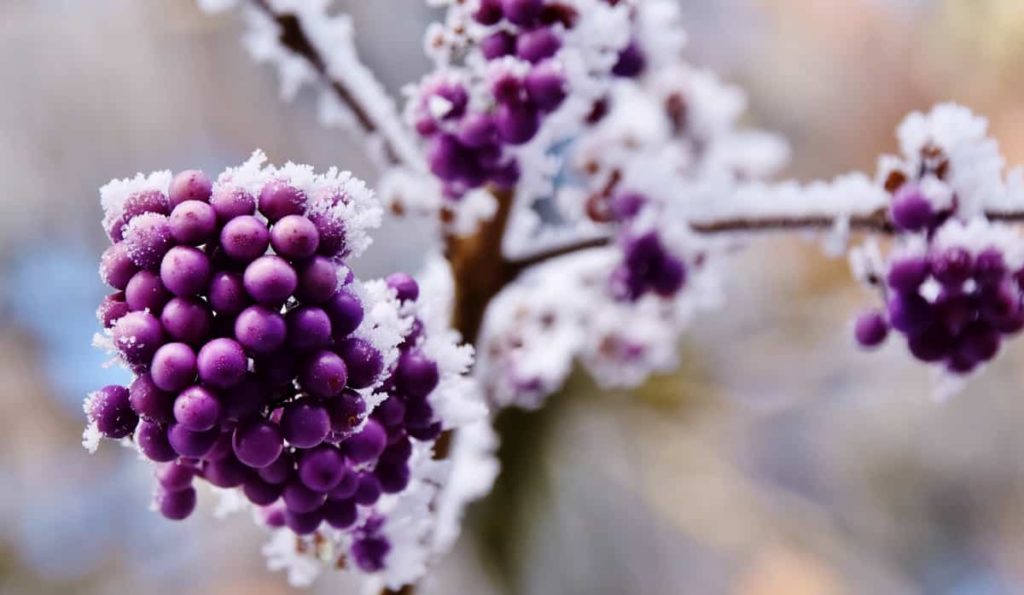
The shrub’s most compelling season is winter where it has glossy, glowing purple berries in dense clusters at leaf axils along the graceful arching branches.
8. Hydrangea (Hydrangea sp.)
Hydrangeas come in just about any size and shape from 1 foot dwarf varieties to 20-foot giants. Their diversity and range, as low as hardiness zone 3, make them spectacular landscape plants.
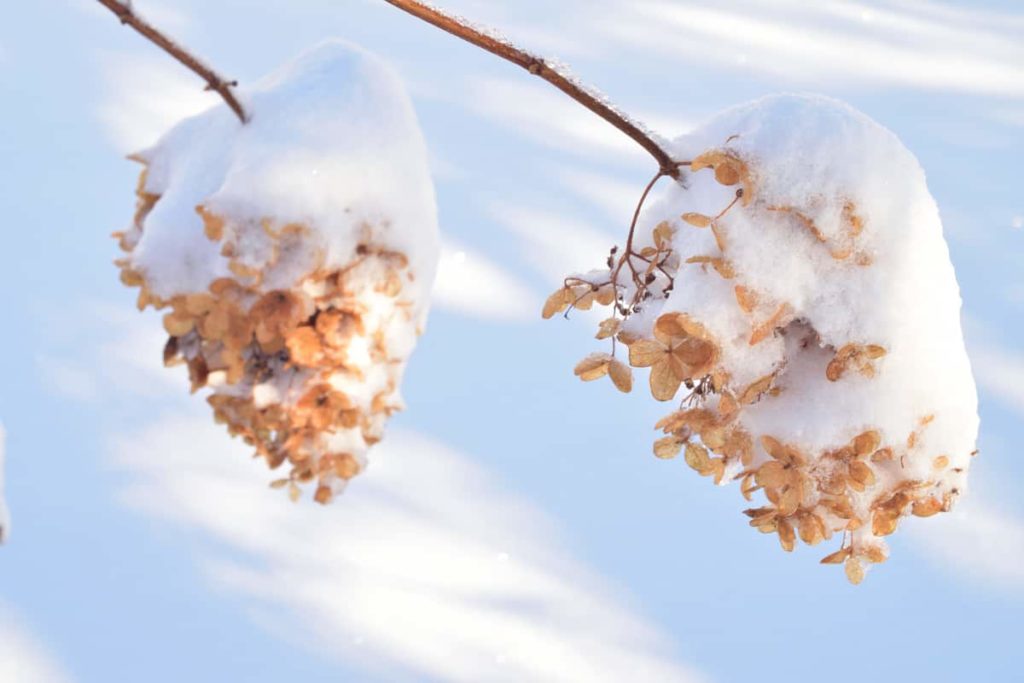
Famous for their giant blooms that progressively change color, hydrangea flowers not only make wonderful cut and dried flowers, but the blossoms may also persist on the plant through the winter months.
9. Witch Hazel (Hamamelis)
A special interest tree or shrub, witch hazel grows 8 to 20 feet tall, expanding up to 12 feet wide. Depending on the cultivar, witch hazel is hardy in zones 3 to 9.
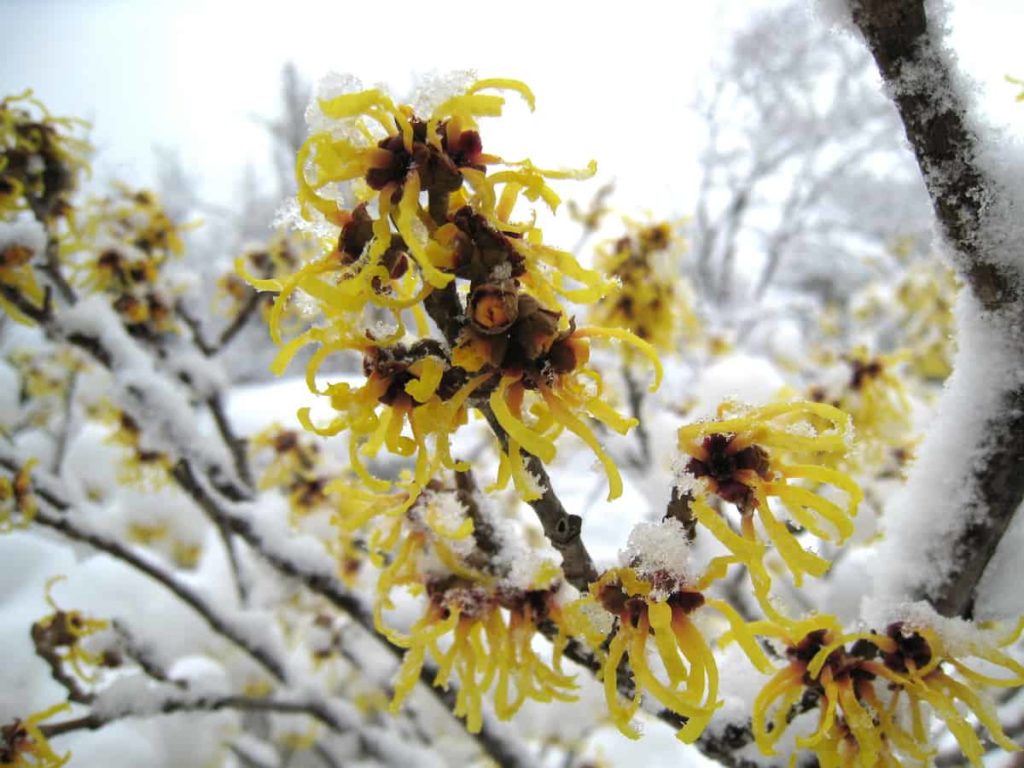
In some areas, witch hazel cultivars blooms in very early spring. The bare branches of some varieties bloom for up to 4 to 5 weeks during the winter months, as early as December.
The blossoms are yellow, orange, or red with long unfurling spider-like petals. The flowers emit a delicious fragrance so witch hazel is a great choice to plant near an entrance or walk way to enjoy the scent.
10. Tibetan Cherry (Prunus serrula)
This eye-catching small tree or shrub grows 20 to 30 feet tall in hardiness zones 5 and 6. A pretty cherry with white spring blossoms and bird attracting fruit. Its most notable feature is the striking mahogany or copper colored bark.
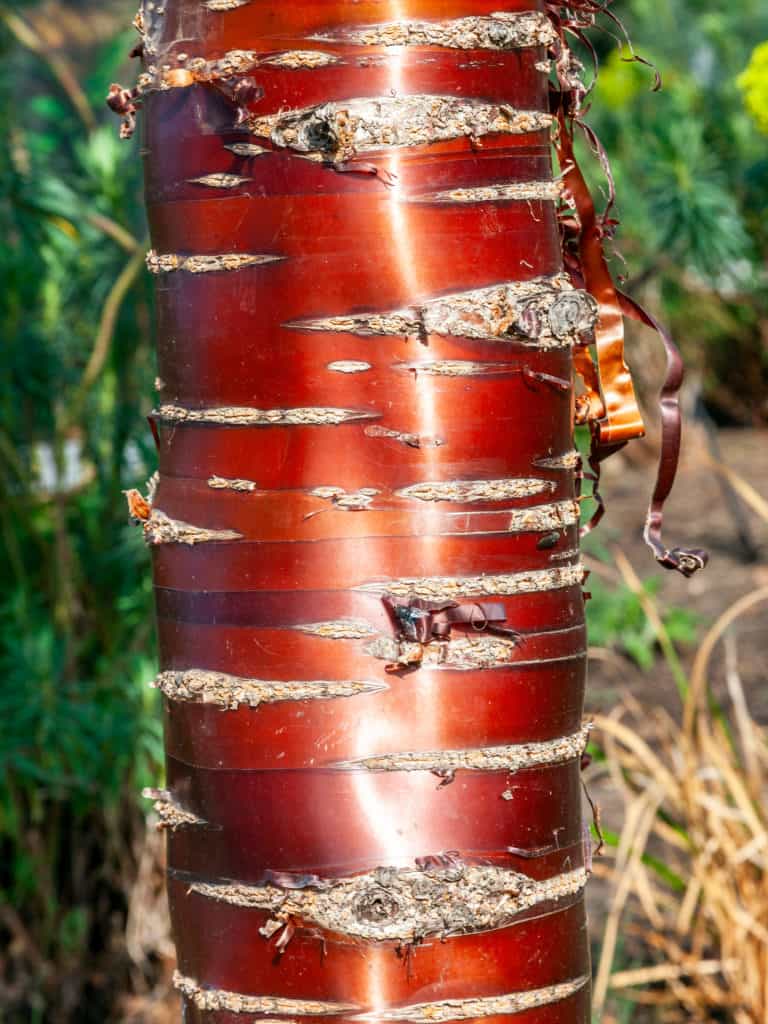
The bark peels in a paper-like fashion not unlike paper birch bark, but in gorgeous shades of red. Use as a specimen or grow in clumps for astounding winter color.
11. Yellow Willow (Salix lutea)
A native willow to North America, yellow willow has stand-out yellow branches in the winter landscape. It is hardy in zones 2 to 9, and easily reaches over 20 feet tall.
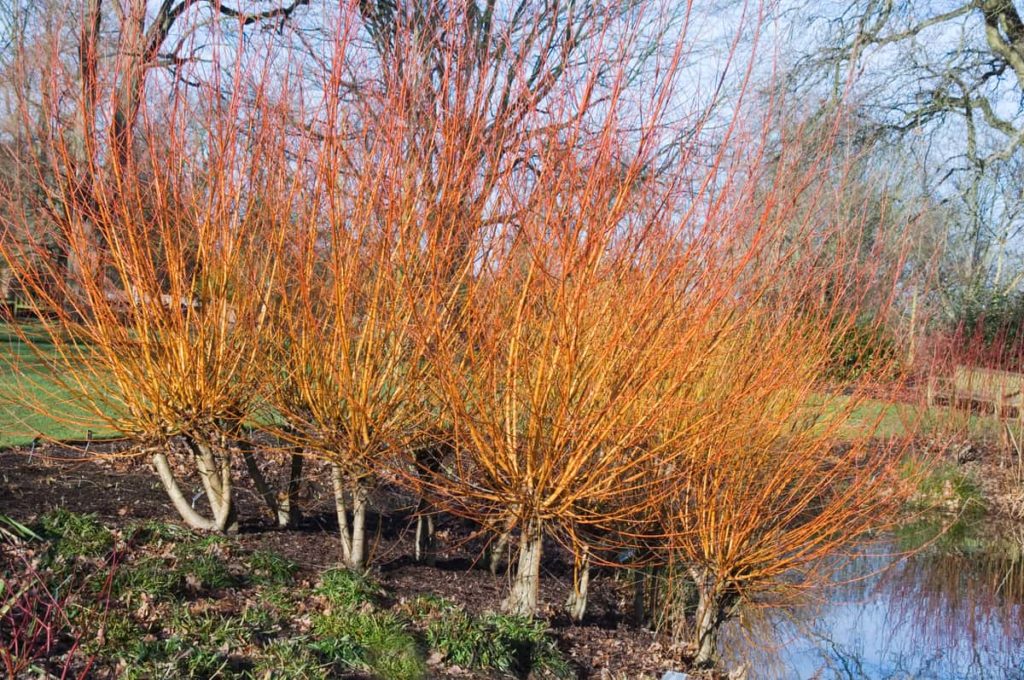
A vigorous growing tree, it is often pollarded to keep it a reasonable size. This is also the best way to show off the bright yellow young branches during the winter months.
12. Corkscrew Willow (Salix matsudana Tortuosa)
Corkscrew willow grows in hardiness zones 4 to 9, reaching heights of 20 to 50 feet. This large type of willow tree is closely related to the enigmatic weeping willow, but even more distinctive with its curly twisted branching habit.
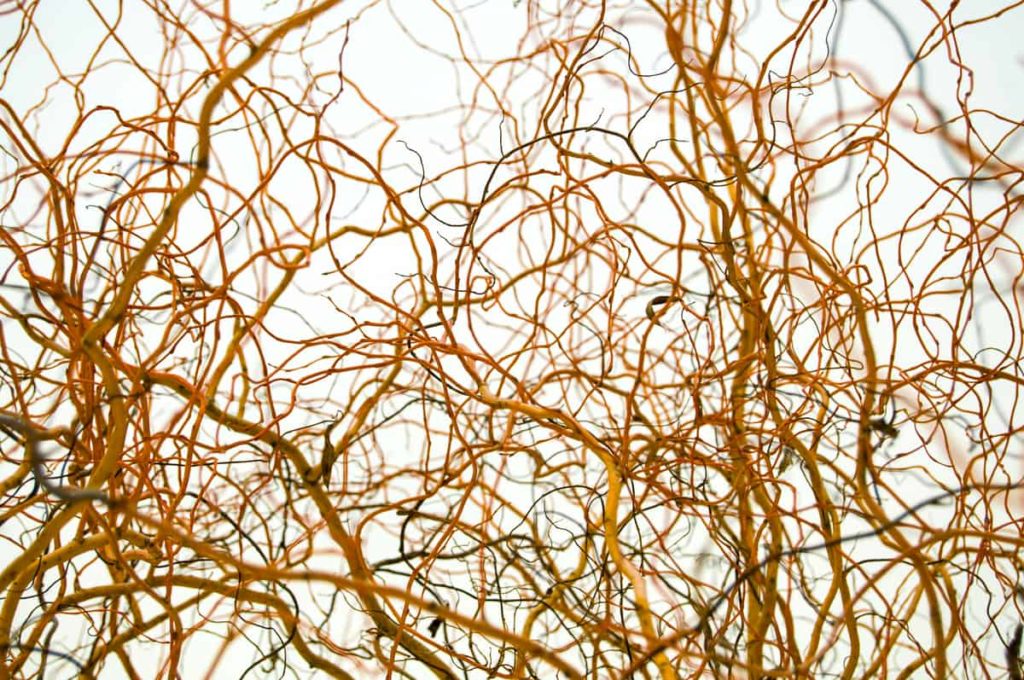
The tall, fast-growing tree is stunning against the grey skies of winter. The curly branches are often used in winter floral arrangements.
13. Paper Bark Birch (Betula papyrifera)
An iconic winter tree, the large 45-to-100-foot, white barked trees are hardy in zones 2 to 7. Native to western North America, paper bark birch is an important source of food and shelter for many wild creatures and birds.
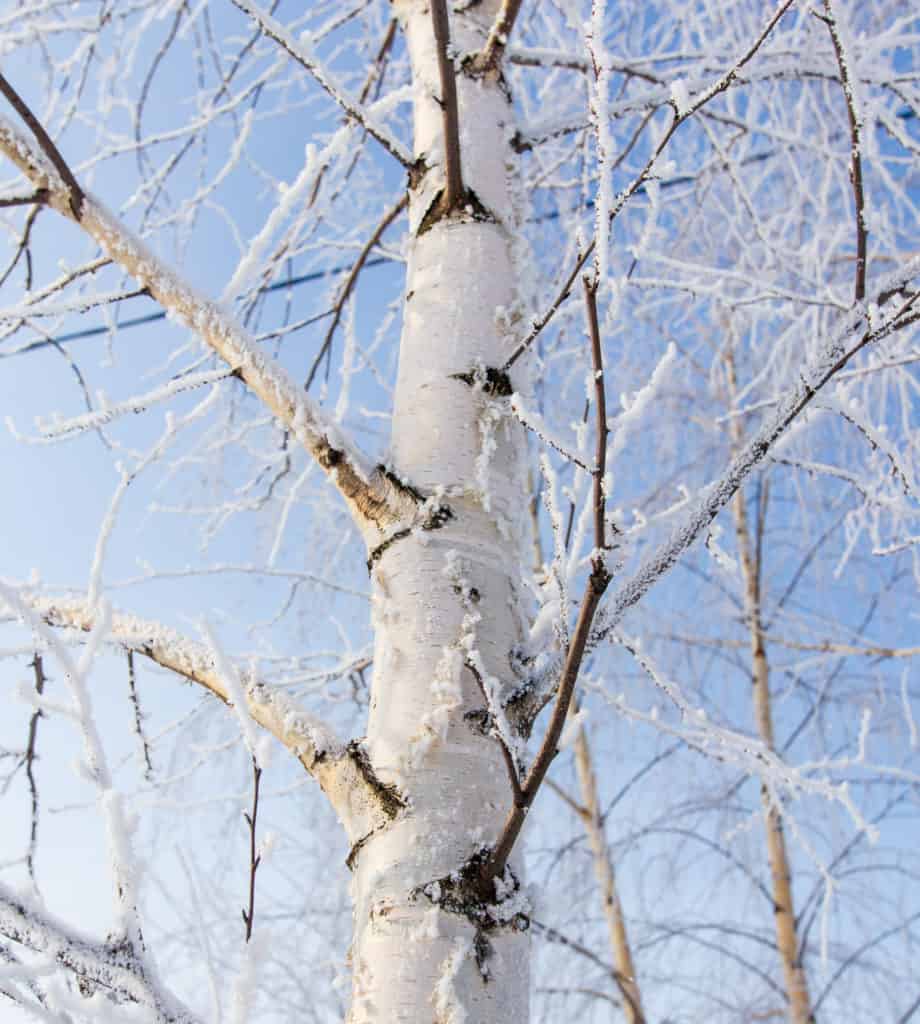
The dark lenticels and peeling papery bark make this tree attractive in the winter landscape. They grow in clumps but can grow in one single trunk as well.
Beautifully stunning on their own, they also make a wonderful background to other winter interest shrubs. Particularly those with brightly colored branches, such as red osier dogwood, to contrast with the white papery bark.
14. Paperbark Maple (Acer griseum)
A gorgeous small specimen tree that reaches 15 to 30 feet tall and is hardy in zones 4 to 8. Along with wonderful vividly copper-red fall color, the winter interest of this tree lies in its cinnamon-colored peeling bark.
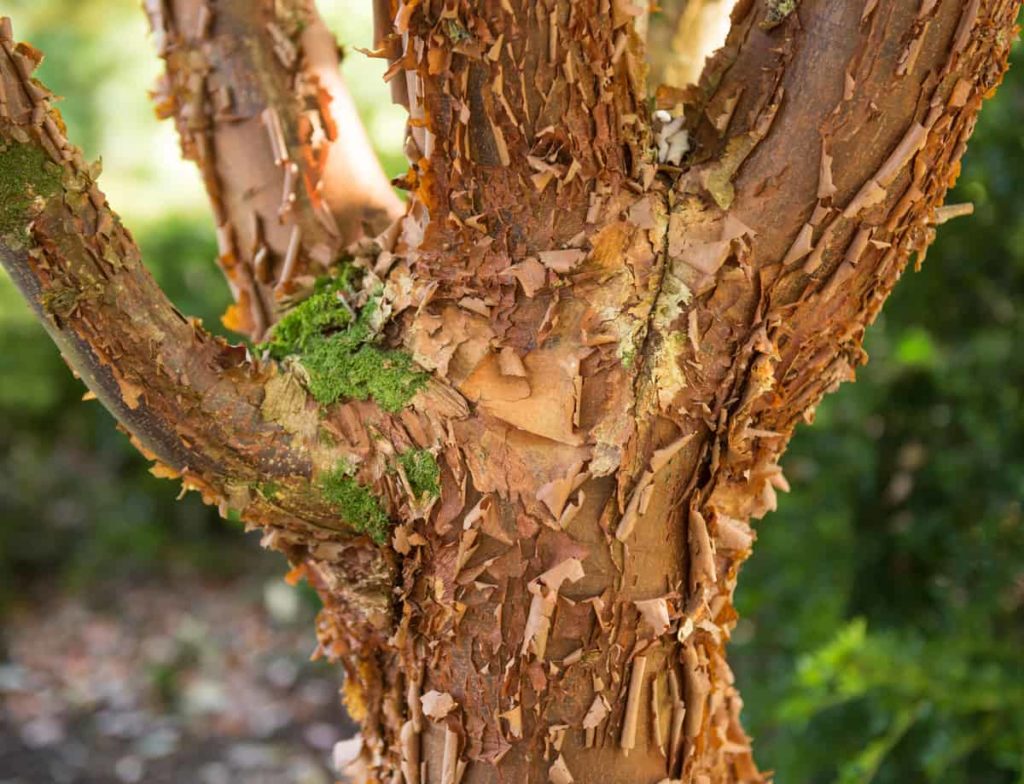
Maple trees may be a well-known symbol of the northern part of North America, but this maple’s origin is from central Asia. Many maple trees and shrubs share a variety of winter interest attributes, but the shedding bark of this species is especially unique.
15. Crabapple (Malus)
A diverse range of crabapples are available from small trees reaching only 12 to 15 feet with large specimens growing over 30 feet. Many varieties are hardy in zones 3, 4, and 5, while some are hardy down to zone 2.
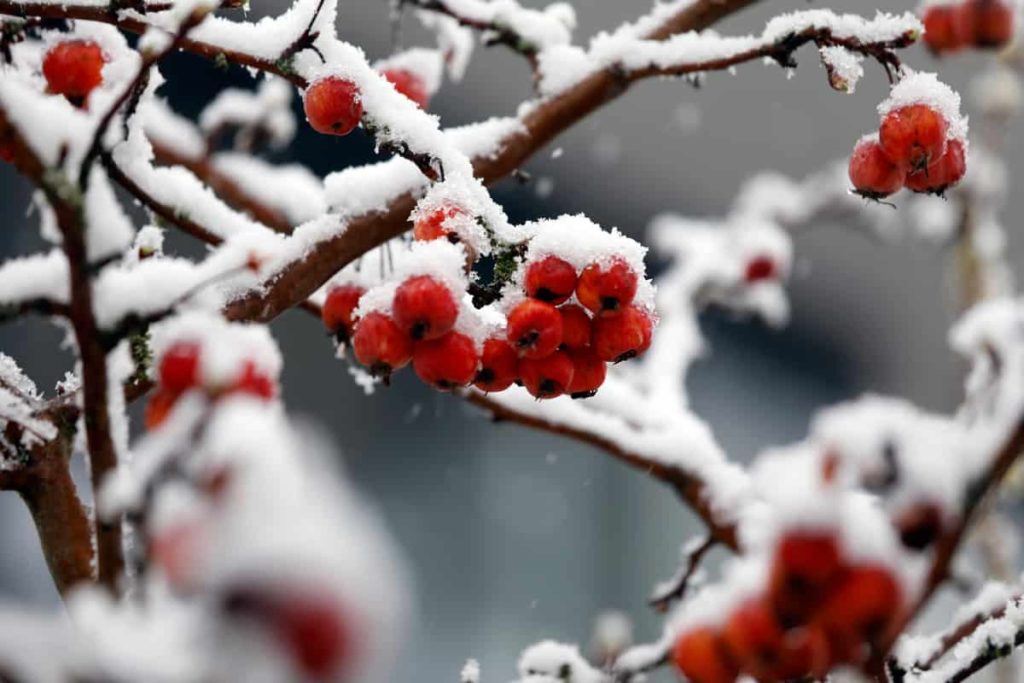
For bird lovers, crabapples may be the best bet for securing many joyful winter months of bird watching entertainment. With new varieties available all the time, the list of choices for a favorite crabapple is nearly endless.
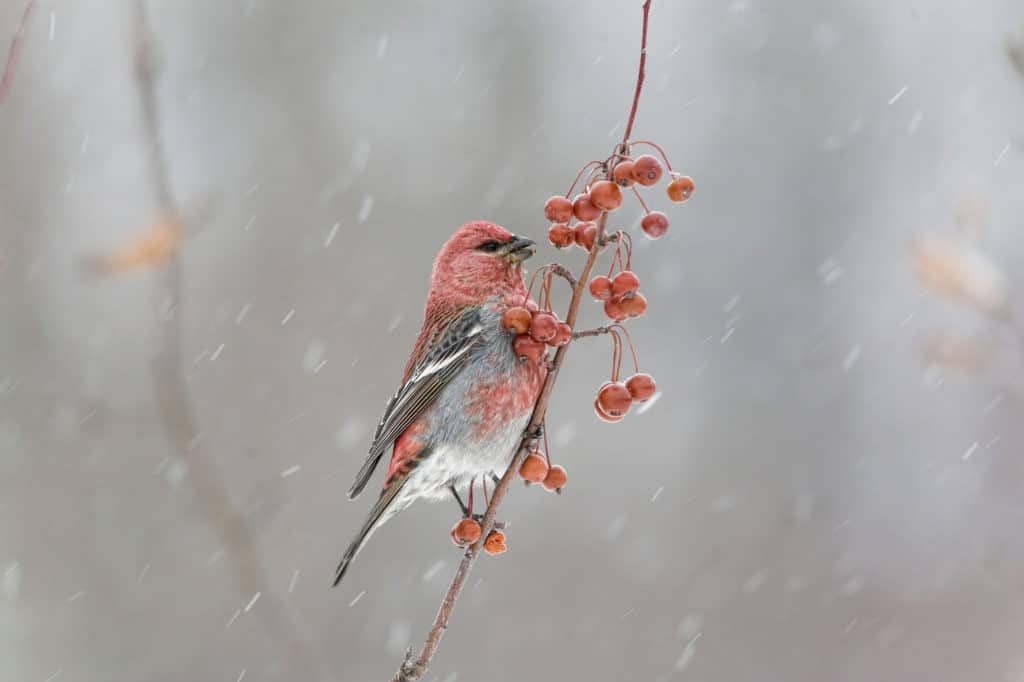
It is best to grow at least two crabapples to ensure cross pollination. Well-known for fragrant spring blossoms, small-fruited varieties may be the best food sources for wild visiting birds.
16. Showy Mountain Ash (Sorbus decora)
A wonderful showy street tree, with enough space, showy mountain ash will reach 40 feet in height. Extremely hardy, mountain ash trees thrive in even zone 2a.
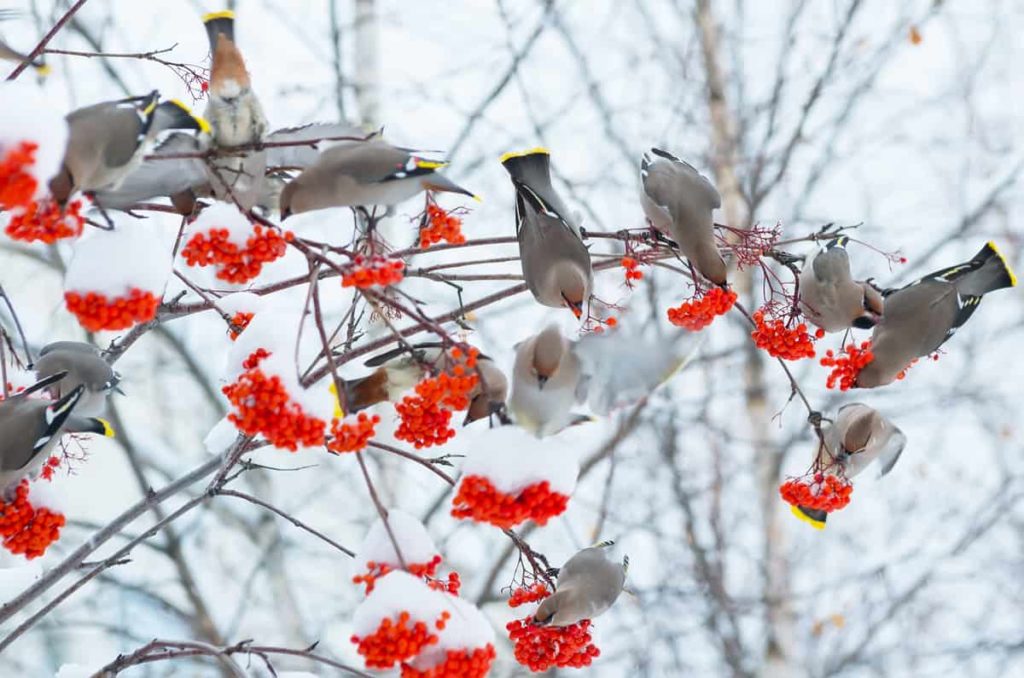
Spring blossoms are flat, large, off-white umbels that have a strong, almost pleasant scent. These are followed by large clusters of pendulous bright orange/red berries. Another wonderful tree for wildlife watching.
4 Best Ornamental Grasses for Winter Interest
Cleaning up the garden in the fall is a rewarding, cleansing task. Putting everything to bed and protecting precious plants from the upcoming harshness of winter is fulfilling and beneficial.
Yes, cleaning up withered plant debris may help reduce soil-borne diseases. It also helps to minimize overwintering problem pests and their larvae.
But, selectively leaving upright or arching stems, interesting seed heads, and dried flowers is a wealth of winter beauty not to be overlooked!
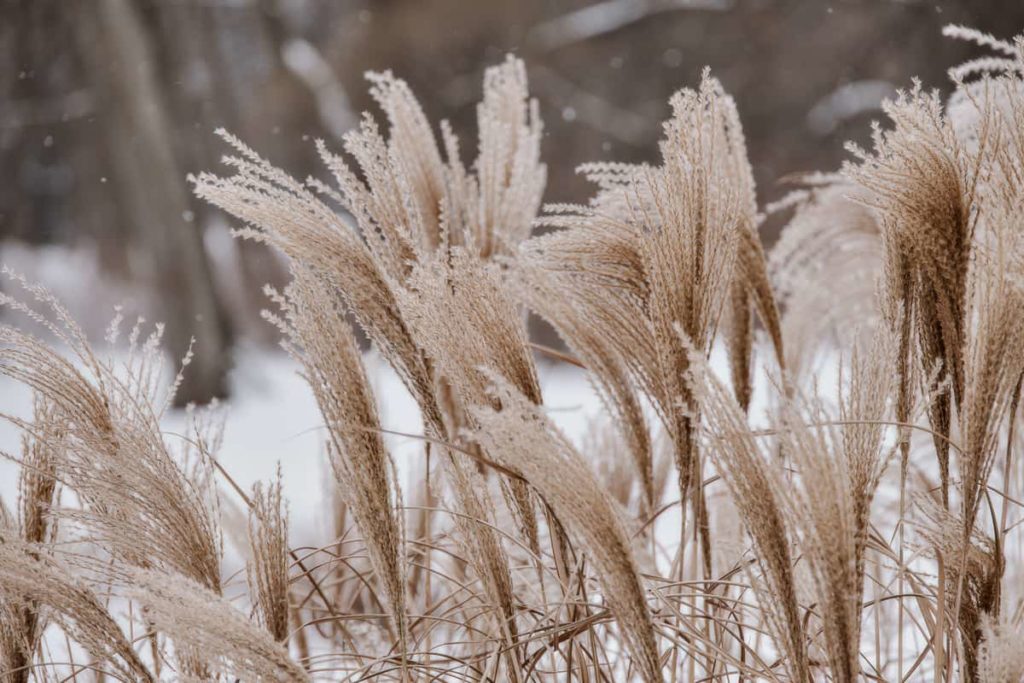
1. Feather Reed Grass (Calamagrostis)
Hardy varieties, such as Karl Foerster are hardy in zones 4 to 9. Feather reed grass may hold their form and interest throughout the winter months.
2. Bottlebrush Grass (Hystrix patula)
The bottlebrush-looking seed heads of this 3-to-5-foot native grass look great dusted with snow. They are hardy in zones 4 to 9.
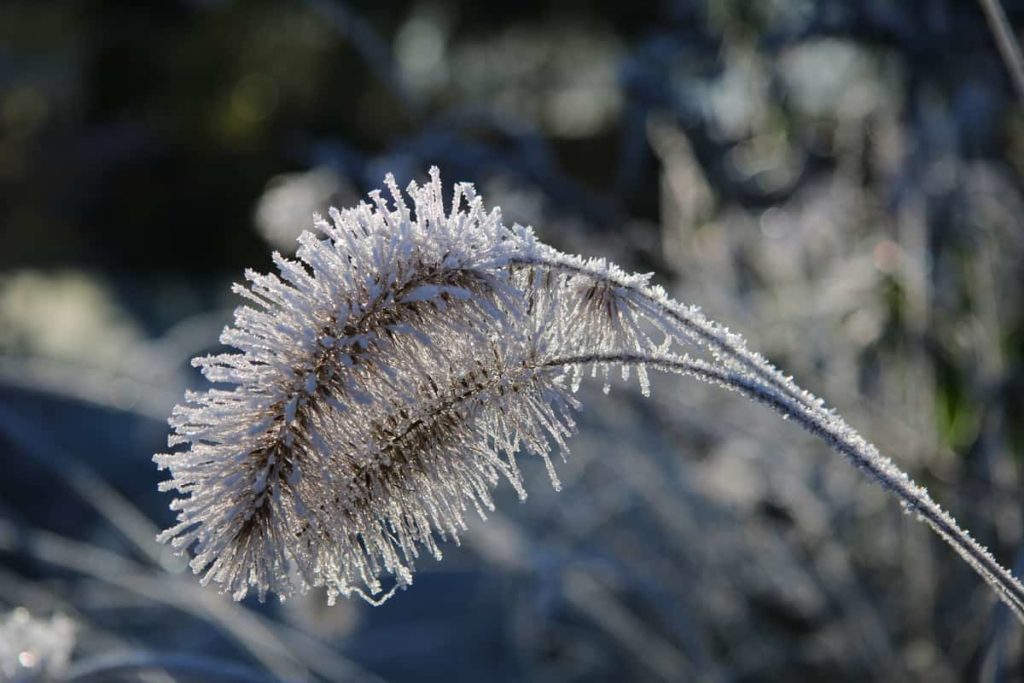
3. Switch Grass (Panicum virgatum)
This upright 4-to-5-foot grass is dramatic surrounded by blankets of snow. It is native to the prairies and Hardy in zones 5 to 9.
4. Blue Oat Grass (Helictotrichon sempervirens)
Stunning as an underplanting to colorful barked shrubs, blue oat grass grows up to 3 feet and is hardy in zones 4 to 8.
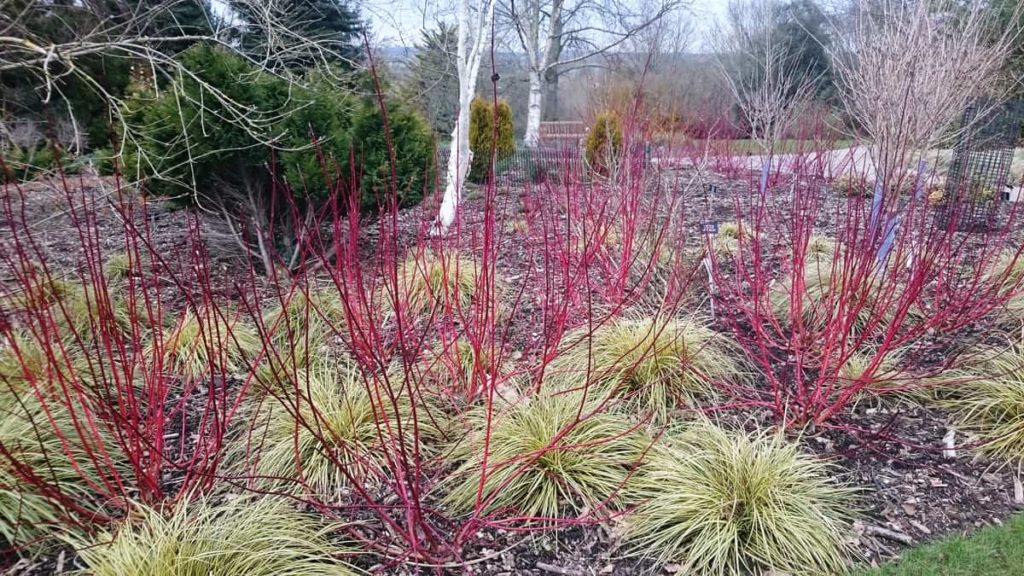
Perennials for Winter Interest
There are potentially too many perennials to mention! From the flat flower heads of yarrow to the odd-looking globe seed heads of poppies, many perennials have at least one feature worth admiring through winter.
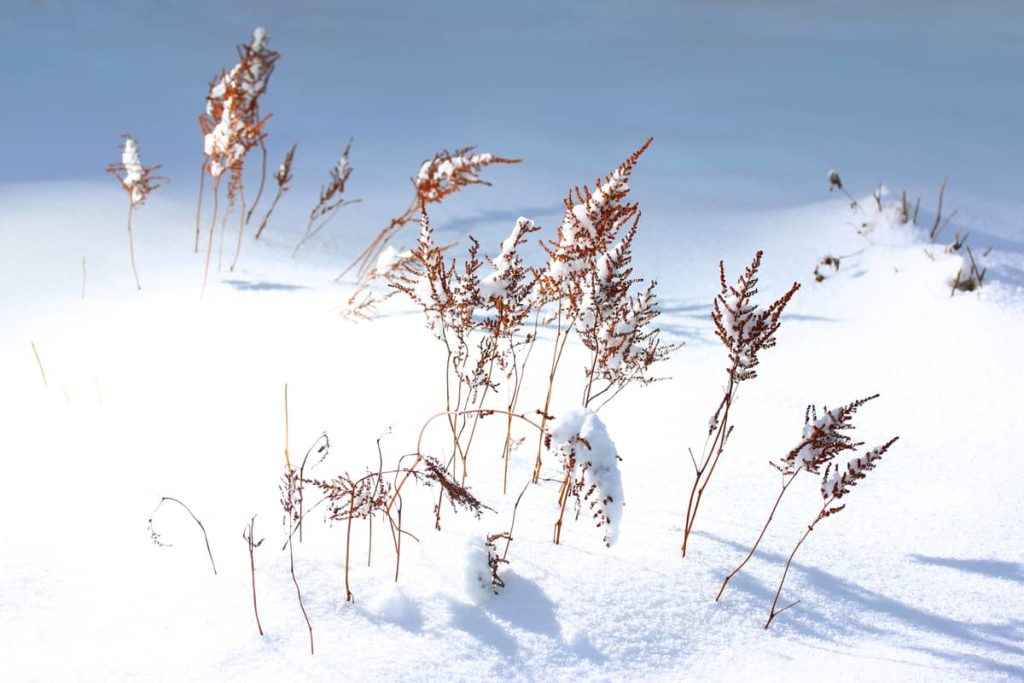
The seeds and dried flowers may also be a valuable source of food for migrating and winter hardy birds and mammals. Even leaving some wild plants and weeds in play during the winter may help provide a food source.
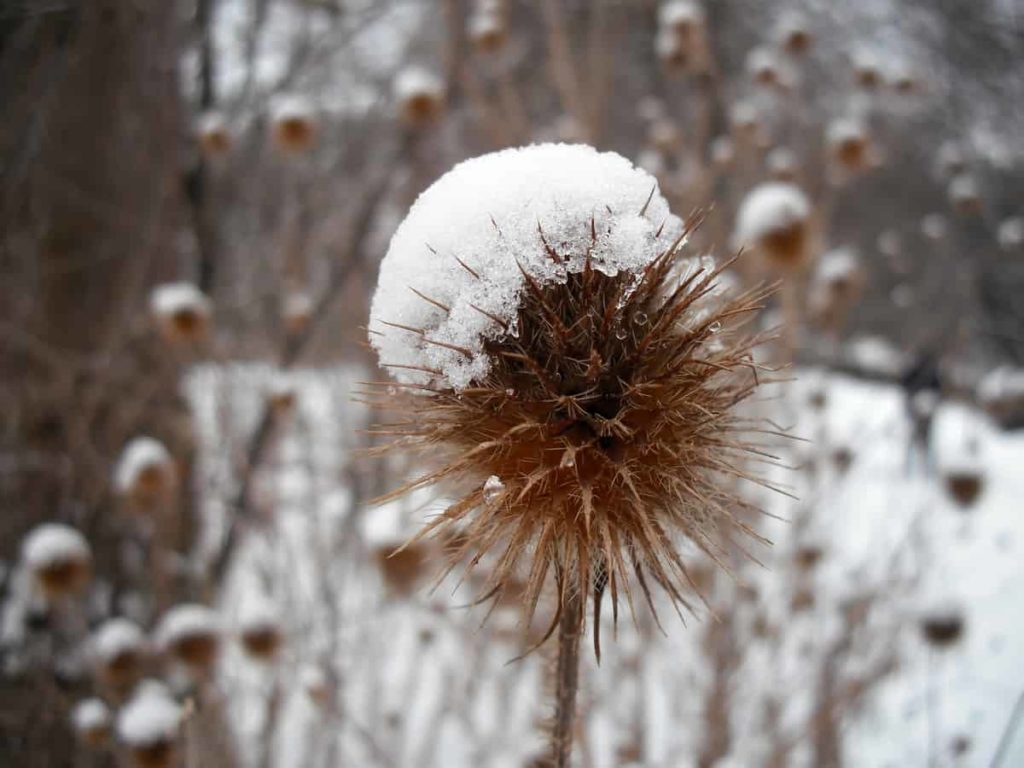
Some excellent choices of perennials to consider selectively leaving during fall cleanup might include sedum, echinacea, rudbeckia, echinops, sea holly, and astilbe.
Final Thoughts
Enjoying winter may be a challenge for some. For the keen observer, there are incredible ways to bring joy and beauty into the cold winter months. Carefully selecting plants and highlighting their off-season splendor is one way to make the most of this precious time of year.
